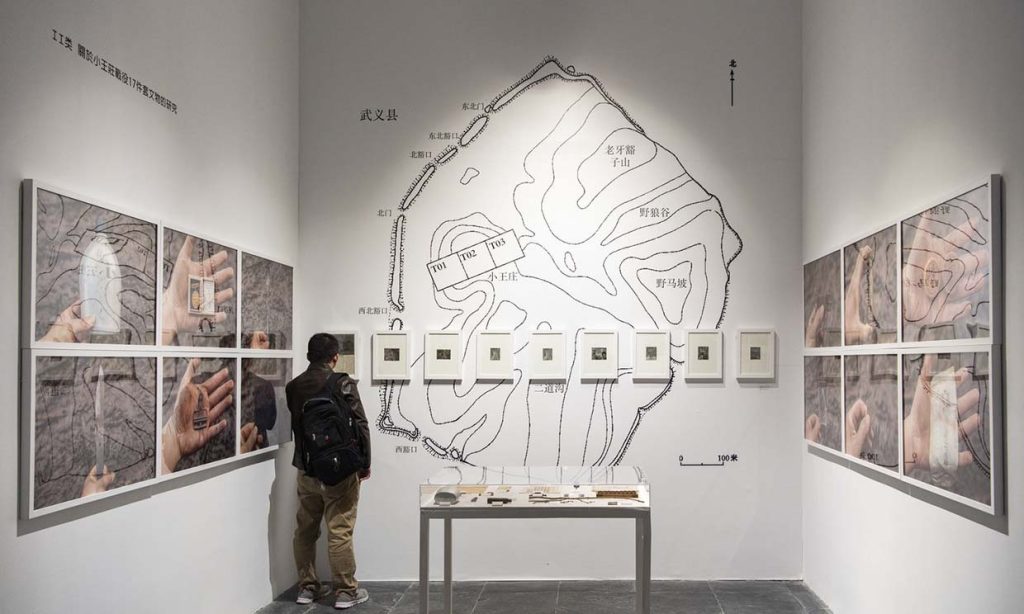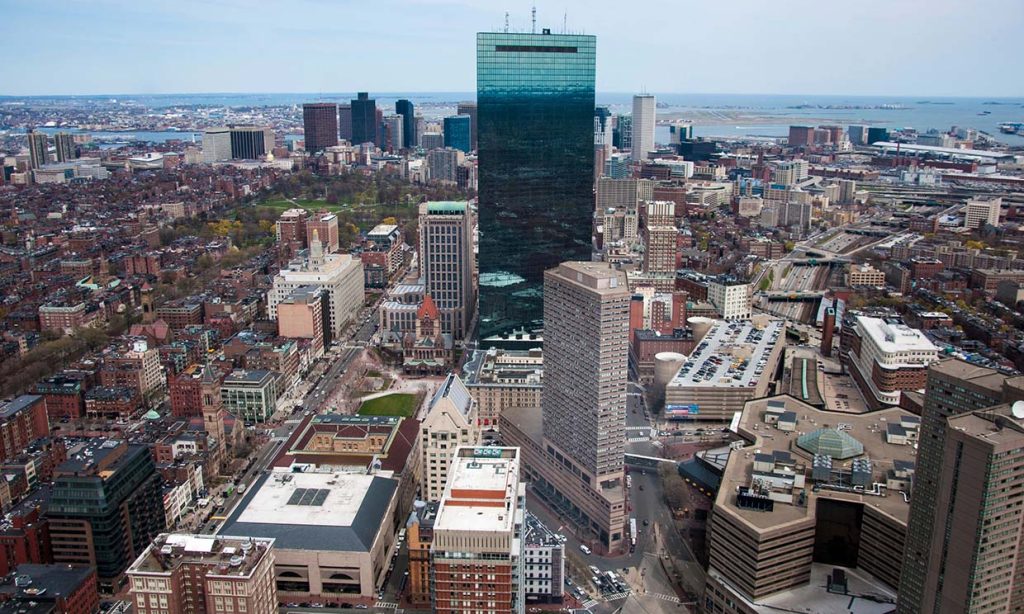I found myself captivated by the allure of Chicago, a city synonymous with towering skyscrapers and architectural ingenuity. I will recount my personal exploration of three distinct landmarks and provide recommendations for four additional sites that beckon fellow adventurers to delve into the architectural wonders of the Windy City.
Willis Tower: Soaring to New Heights
Nestled within the bustling heart of downtown Chicago, the Willis Tower stands tall, an architectural marvel and a testament to the city’s enduring legacy. Once known as the Sears Tower, this iconic skyscraper proudly held the title of the world’s tallest building for an impressive 25 years. My own ascent to the summit of the Willis Tower began with a captivating elevator journey, transporting me to the Skydeck on the 103rd floor. From this elevated vantage point, the panoramic views unfolded, stretching far beyond the shores of Lake Michigan.
The Skydeck at Willis Tower offers a comprehensive array of services, creating an immersive experience for visitors. Informative exhibits delve into the tower’s construction, providing a fascinating glimpse into its storied history. Souvenir shops allow guests to take a piece of this architectural wonder home, while a glass-floored observation deck adds an exhilarating dimension to the visit, offering a vertigo-inducing view of the city below.
The unobstructed views, interactive exhibits, and the expertise of the knowledgeable staff collectively make the Willis Tower Skydeck an absolute must-visit. Whether you are an architecture enthusiast eager to unravel the secrets of the city’s skyline or a thrill-seeker seeking an adrenaline-pumping adventure, the Skydeck caters to diverse interests.
Situated prominently at 233 S Wacker Dr, Chicago, IL 60606, USA, Willis Tower’s central location adds to its accessibility and allure, beckoning visitors to delve into the rich tapestry of Chicago’s architectural narrative.
Accessibility is a breeze, with various public transportation options, including buses and subways, providing convenient routes. Taxis and rideshare services further enhance accessibility, ensuring that reaching the Willis Tower is a seamless part of the adventure.
Ticket prices vary, with discounts available for students, seniors, and children.
Standing atop the Skydeck, I felt an intimate connection with Chicago’s architectural history. The immersive exhibits not only provided valuable insights into the construction and evolution of this iconic skyscraper but also ignited a profound appreciation for the city’s enduring spirit. The Willis Tower Skydeck transcended being a mere observation point; it became a journey through time, a tangible link between the past, present, and future of Chicago’s ever-evolving skyline.
Art Institute of Chicago: Where Art and Architecture Converge
Embarking on a stroll through Grant Park, I stumbled upon the Art Institute of Chicago—a cultural gem that seamlessly weaves together the threads of art and architecture. The museum, adorned in the distinguished Beaux-Arts style, emerges as more than a mere repository of art; it stands as an elegant testament to the city’s dedication to preserving and celebrating its rich artistic heritage. The meticulous design of the building itself serves as a prelude to the artistic treasures housed within.
The Art Institute extends a wealth of services to its visitors, transforming the museum visit into a multifaceted experience. Guided tours unravel the stories behind the artworks, educational programs engage curious minds, and interactive exhibits create a dynamic exploration of the intricate relationship between art and architecture.

A visit to the Art Institute offers a feast for the senses, where a diverse array of artworks harmoniously coexists with the architectural beauty of the museum. This unique amalgamation creates a captivating and enriching experience suitable for visitors of all ages, from seasoned art enthusiasts to those just beginning their artistic journey.
To navigate the myriad of galleries and exhibitions seamlessly, I found it beneficial to plan a focused itinerary based on personal interests. This approach allowed me to delve deeply into the areas that resonated most with my artistic preferences.
Situated at 111 S Michigan Ave, Chicago, IL 60603, USA, the Art Institute of Chicago occupies a prime location, further enhancing its accessibility and appeal within the vibrant cityscape.
The museum is easily accessible through various modes of public transportation, providing a convenient option for those looking to embrace the city’s transit system. Additionally, nearby parking facilities cater to visitors who choose to arrive by car, ensuring a hassle-free journey.
Admission fees to the Art Institute vary, with discounts available for students, seniors, and children. It’s worth noting that special exhibition fees may apply, necessitating a visit to the official website for the most up-to-date pricing information.
Wandering through the halls of the Art Institute, I found myself captivated not only by the masterpieces adorning the walls but also by the seamless integration of art and architecture. The design of the museum not only serves as a backdrop but actively enhances the overall experience, creating an immersive journey through the cultural tapestry of Chicago. Each step within the Art Institute felt like a discovery, a testament to the harmonious relationship between the artistic expressions housed within and the architectural splendor surrounding them. It truly stands as a cultural haven within the bustling city, inviting all who enter to partake in a rich tapestry of human creativity and expression.
Millennium Park: A Modern Urban Oasis
Exploring the heart of downtown Chicago, I discovered Millennium Park, a modern urban oasis seamlessly blending innovative design with the serenity of natural elements. Within its boundaries, iconic landmarks such as Cloud Gate, affectionately known as “The Bean,” and the Jay Pritzker Pavilion stand as testaments to the city’s unwavering commitment to creating dynamic and vibrant public spaces.
Millennium Park is not merely a static space; it is a dynamic hub of activity hosting a myriad of events, concerts, and festivals throughout the year. Its thoughtful design extends beyond aesthetics, incorporating practical amenities such as meandering walking paths, lush gardens, and interactive art installations that invite visitors to engage with their surroundings.
The modern and dynamic design of Millennium Park serves as a refreshing contrast to the city’s historic architecture. The inclusion of free public events transforms it into an accessible and lively destination, drawing both locals and visitors alike. The park’s commitment to providing a diverse range of experiences ensures that it remains a vibrant cultural center within the bustling city.
While the allure of Millennium Park is undeniable, navigating through crowds can pose a challenge, especially during peak hours and events. To optimize the experience, I found that planning visits during weekdays or off-peak times proved instrumental in enjoying the park’s offerings without the hindrance of overwhelming crowds.
Strategically positioned at 201 E Randolph St, Chicago, IL 60602, USA, Millennium Park stands as a central and easily accessible gem within the Loop, inviting exploration and contemplation.
Navigating to Millennium Park is a breeze, thanks to its convenient location in the Loop. Public transportation options, including buses and trains, offer a seamless journey for those keen on immersing themselves in the park’s contemporary allure.
The juxtaposition of the futuristic architecture embodied by Cloud Gate against the backdrop of the city skyline is a visual delight that defines Millennium Park. My foray into the park’s vibrant atmosphere, marked by the laughter of visitors and the harmonious hum of city life, provided a stark yet harmonious contrast to the historic architecture that Chicago is renowned for. The striking design of its landmarks, coupled with the accessibility of free public events, left an indelible impression on my Chicago adventure. Millennium Park, in its modernity and dynamism, revealed itself as a testament to the city’s commitment to evolving and creating spaces that resonate with the contemporary spirit of urban life.
Recommended Architectural Marvels:
John Hancock Center: Sky-High Elegance
The John Hancock Center, officially known as 875 North Michigan Avenue, boasts a distinctive design that sets it apart on the city’s skyline. The 360 Chicago Observation Deck on the 94th floor provides sweeping views of Chicago and beyond, offering a unique perspective on the city’s architectural landscape.
The 360 Chicago Observation Deck features interactive exhibits, a thrilling TILT experience, and a cafe for visitors to enjoy the view over refreshments.
The observatory’s location and design provide unparalleled views, and the TILT experience adds an extra element of excitement for visitors.

875 N Michigan Ave, Chicago, IL 60611, USA.
Easily accessible in the Magnificent Mile district, with nearby parking and public transportation options.
The John Hancock Center’s sleek design and the TILT experience offered a unique perspective on Chicago’s architecture, complementing the city’s diverse skyline.
Chicago Riverwalk: Riverside Charm
The Chicago Riverwalk is a hidden gem that allows visitors to experience the city from a different vantage point. Stretching along the Chicago River, this pedestrian-friendly pathway is adorned with art installations, gardens, and architectural marvels, providing a serene escape in the midst of urban hustle.
The Riverwalk features restaurants, cafes, and boat tours, allowing visitors to explore the city’s architecture while enjoying waterfront dining.
The Riverwalk’s scenic beauty, coupled with its proximity to iconic buildings, makes it a picturesque destination for a leisurely stroll or a relaxing meal by the water.
Some sections can be crowded, especially during peak hours. Exploring during off-peak times enhances the tranquility of the experience.
Chicago Riverwalk spans from Lake Shore Drive to Franklin Street, along the south bank of the Chicago River.
Accessible from various points in the Loop, with nearby public transportation options.
The Chicago Riverwalk provided a peaceful retreat, allowing me to appreciate the city’s architecture from a different perspective. The blend of nature and design along the riverfront was a delightful surprise.
Robie House: Frank Lloyd Wright’s Masterpiece
For architecture enthusiasts, a visit to the Robie House is a journey into the genius of Frank Lloyd Wright. Located in the Hyde Park neighborhood, this Prairie School masterpiece exemplifies Wright’s innovative approach to residential design, showcasing his emphasis on horizontal lines and integration with the surrounding environment.
The Robie House offers guided tours that delve into the history and architectural significance of this iconic structure.
The opportunity to explore a Frank Lloyd Wright masterpiece in person is a rare and enriching experience. The guided tours provide valuable insights into the architect’s vision.
Due to its historic nature, some areas may have limited accessibility. Checking ahead for any restrictions is advisable.
5757 S Woodlawn Ave, Chicago, IL 60637, USA.
Easily accessible by public transportation, with nearby parking options.
Walking through the rooms of the Robie House felt like stepping back in time. The meticulous attention to detail and the integration of nature into the design showcased Frank Lloyd Wright’s timeless brilliance.
Chicago’s architectural wonders captivated my senses, providing a deep appreciation for the city’s rich history and innovative spirit. From the dizzying heights of the Willis Tower to the artistic haven of Millennium Park, each landmark tells a unique story of Chicago’s evolution. Exploring the recommended marvels, including the John Hancock Center, Chicago Riverwalk, and Robie House, further enriched my architectural journey, offering diverse perspectives on the city’s skyline and design legacy. As I reflect on my time in the City of Skyscrapers, I can attest that Chicago’s architectural wonders are not just structures—they are living testaments to the ingenuity and creativity that define this remarkable city.